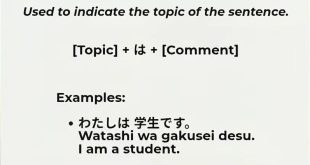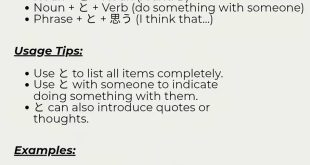Difference between Particles は (wa) and が (ga) in Japanese
The Japanese particles は (wa) and が (ga) serve different functions in a sentence, and understanding their distinction is key to mastering Japanese grammar.

は (wa)
1. Topic Marker: は indicates the topic of the sentence. It sets the context and tells the listener what the conversation is about. The topic does not necessarily have to be the subject of the sentence.
Example:
私は学生です
(Watashi wa gakusei desu)
As for me, I am a student.
Here, “私” (watashi) is the topic.
2. Contrast: は can also be used to contrast different topics.
Example:
彼は学生ですが、彼女は先生です
(Kare wa gakusei desu ga, kanojo wa sensei desu) –
He is a student, but she is a teacher.
が (ga)
1. Subject Marker: が marks the subject of the sentence, especially when introducing new information or emphasizing the subject.
Example:
猫が好きです
(Neko ga suki desu)
I like cats.
Here, “猫” (neko) is the subject being talked about.
2. Emphasis and Specificity: が is used when you want to emphasize the subject or when there is a specific subject that is important in the context.
Example:
彼が来ました
(Kare ga kimashita)
He came. (emphasizing that it was he who came).
Summary
Use は (wa) to indicate the topic or for contrast.
Use が (ga) to indicate the subject, especially when introducing new information or emphasizing it.
Understanding when to use each particle can greatly enhance your fluency and comprehension in Japanese.
Related Post:
Japanese Particle Exercises – Part 3 (with Answers)
How to use 17 Particles in Japanese
 Learn Japanese
Learn Japanese







